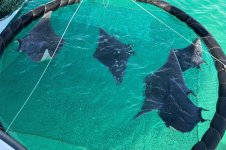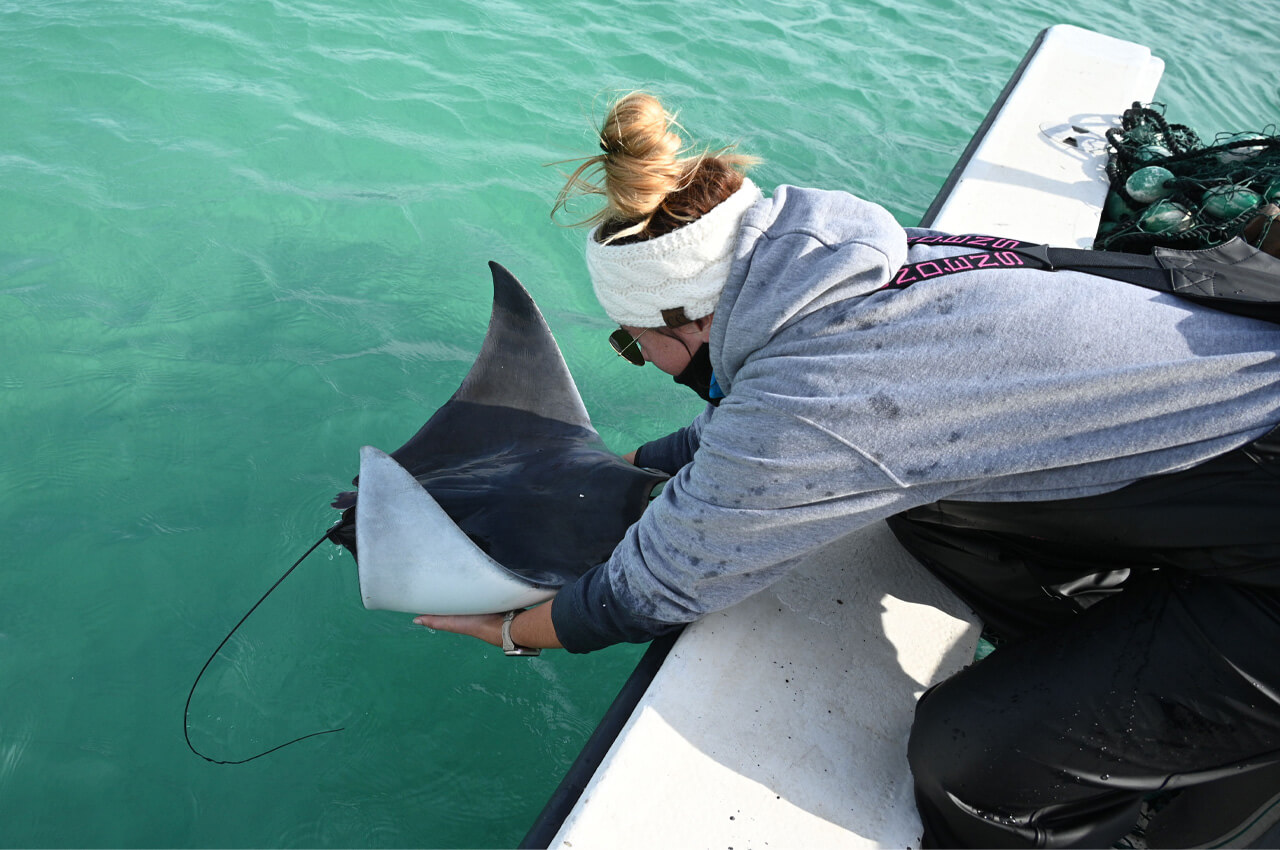
Researchers with Mote Marine Laboratory & Aquarium in Sarasota, Florida have teamed up with the Okaloosa Coastal Resource Team to study devil rays in Northwest Florida.
This collaborative effort aims to shed light on the migration patterns of the devil rays and learn more about their behavior and ecology.
According to the Okaloosa Coastal Resource Team, the devil rays are typically only seen in our area during the fall and winter months.
It all started in 2021, when members of the Okaloosa Coastal Resource Team were working to install 3 miles of sand fence and noticed a large number of devil rays swimming close to the shore in the fall and winter months.
This sparked their curiosity, leading them to reach out to the Mote researchers who they knew were studying devil rays in southern Florid
Since 2009, Mote Researchers have been collecting data on three pelagic ray species: spotted eagle rays, manta rays, and devil rays. All three species are classified as “Endangered” on the International Union for Conservation of Nature (IUCN) Red List, and understanding their distribution and movement patterns in the Gulf of Mexico, Caribbean Sea, and Western Atlantic Ocean is critical for informing conservation strategies.
“The fact that you have them (devil rays) there consistently in the winter months is sort of unique and it makes for a really good research opportunity,” said Kim Bassos-Hull, Senior Biologist at Mote. “This behavior is not typical for the species anywhere else. Even where we are in Sarasota, it’s rare and opportunistic when we see them.”
Last November, the Okaloosa Coastal Resource Team scoped out the presence of devil rays ahead of Mote’s arrival in Okaloosa. The team was initially worried that the warm weather might impact the presence of devil rays, but they were able to find a small group on their first day out.
During their week on the water, they were able to successfully find 17 devil rays, tagging 7 of them with acoustic tags. They were also able to collect biological and genetic samples, in addition to plankton samples collected by a researcher from the University of Georgia.
The Mote researchers will process these samples and analyze the data to gain a deeper understanding of the devil rays and their habitat.
“The first devil rays acoustically tagged by Mote in 2020 and 2021 have come to the Panhandle,” said Atlantine Boggio-Pasqua, Mote researcher and co-lead on the project.
According to Coastal Resource Manager Alex Fogg, an animal is tagged with a device the size of a battery. It then sends out a unique ‘ping‘ that if in close proximity to a receiver will be detected and stored.
“We then go out and download the receiver to see what tags have passed by,” he said. “There is a large network of receivers throughout the Gulf, East Coast and Caribbean that are maintained by numerous research entities and we all share the data.”
“We just downloaded some of our receivers in Sarasota and have detections of two devil rays who traveled to the Panhandle in the winter and came back to Sarasota this summer,” continued Boggio-Pasqua. “The tags we deployed in 2022 will help us confirm this seasonal migration and hopefully uncover their full range of movements.”
The researchers hope that their work will help to shed light on the migratory patterns of devil rays with the help of their underwater acoustic receivers and tagging technology.
They aim to understand why the devil rays come to the Panhandle area during specific times of the year and where they go when they leave.
“Is it a temperature thing? Are they following food? Why do they come up here and where do they go from here? And why aren’t they here all year?” said Jessica Valek, Okaloosa Coastal Resource Coordinator. “We are trying to figure out and understand why they come up this way during this specific time of year.”
This collaborative research project between Mote and the Coastal Resource Team is the first step toward getting those answers.

Researchers study Devil Rays in Northwest Florida to understand winter migration patterns
Researchers with Mote Marine Laboratory & Aquarium in Sarasota, Florida have teamed up with the Okaloosa Coastal Resource Team to study devil rays in
 www.getthecoast.com
www.getthecoast.com